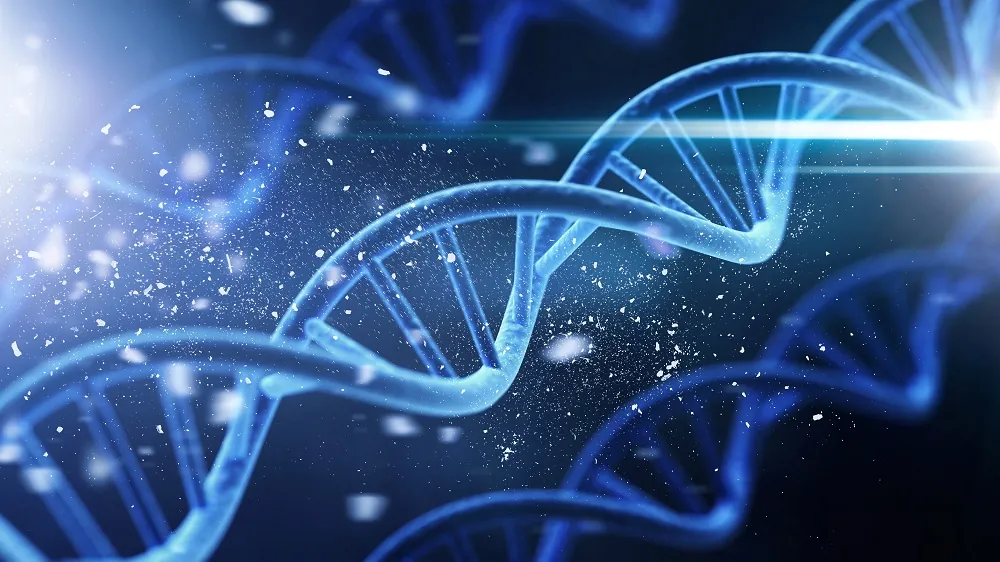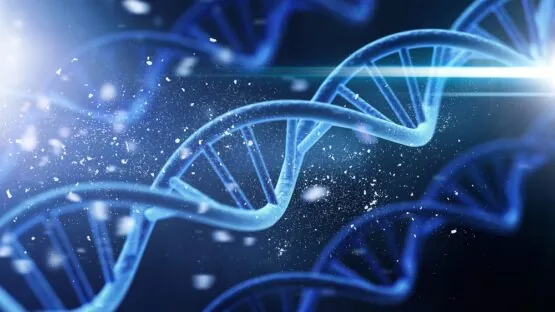In Aging Cell, researchers have described core genes that apply to a wide variety of species and appear to be causal drivers of aging.
Looking for signals in the noise
Introducing their study, the researchers note that gene expression changes are difficult to interpret because they occur across a panoply of genes and the strongest results are seen in downstream effects rather than upstream causes [1]. The increase in random noise with aging also obscures any particular signals that are occurring alongside it [2].
Many of these potential signals only occur in specific tissues, and others only occur in certain species, hampering their utility in research. Meta-analyses pioneered by luminaries in the field are useful for determining which genes are being more broadly upregulated and downregulated [3]. However, proving which of these genes are actually driving the processes of aging, rather than being downstream responses or compensatory effects, is difficult [4].
Studying the effects of these changes is one particular difficulty. Immortalized cell lines are, of course, useless for the purpose, and studying each of these changes in living organisms is uniquely difficult given the number of potential variables involved. Fortunately for this research, many of these genes are conserved between a very wide variety of organisms; orthologs in such short-lived species as C.elegans worms have similar effects in humans [5], even in the nervous system [6]. These nematodes live for days rather than years, making lifespan-related research much easier to iterate upon.
This study was conducted to mitigate the well-known problem of reasonably ascertaining that a worm gene has the same effect in a mammal, combining gene expression datasets with nematode experiments in order to find commonalities.
Finding the right data
These researchers used multiple mammalian gene expression datasets, including datasets that focused on aging and excluding those that involved illness, mutation, or very young organisms. Human studies were included as well, and no tissue types were excluded. All datasets came from the Gene Expression Omnibus of the National Center for Biotechnology Information, and the researchers counted mammalian homologs as their equivalent human genes. The researchers used 25 datasets in total.
Genes were considered based on how many different datasets that they were consistently upregulated or downregulated in. If a gene were consistently, significantly upregulated in nine datasets but downregulated in three, it would have a rank of six, which was the minimum criterion for pathway analysis. A rank of seven was required for inclusion in the nematode testing.
Because it was conducted over so many datasets with extremely variable goals and focuses, this screening yielded only genes that are consistently changed over a wide variety of tissues and species. More of these candidates were found to be upregulated with age than downregulated. Many of the downregulated genes were found to be involved in maintaining the extracellular matrix, and many of the upregulated ones involved the immune system.
Strong effects in worms
Knocking down these genes in C. elegans worms proved fruitful. In order to separate the effects of development and aging, bacteria containing RNA silencers of these genes were fed to the worms after they had finished growing. Some initial results were particularly strong, but confirmation experiments identified six orthologs that extended the worms’ lifespan by 9% to 15%. Very interestingly, it did not seem to matter whether these genes were downregulated or upregulated with age; if a change was age-related at all, knocking the relevant gene down had a life-extending effect in this worm model.
Of course, a worm study is a guide to future work and not a blueprint for interventions. The researchers note that many of the most promising genes have well-established effects on aging. For example, EFEMP1, which had very strong initial results, is associated with brain aging and macular degeneration [7]. CASP-1 already exists as a target for progeria and Alzheimer’s disease [8]. Antagonistic pleiotropy, the mechanism by which a gene is beneficial for young organisms but harmful for the old, is also a key factor. SPARC, which is necessary for bone development, is known to drive pathology in later life [9].
The researchers suggest that the lifespan-boosting effects of suppressing age-downregulated genes may be due to the downregulation being a compensatory mechanism, and completely suppressing such genes helps the worms compensate further. By demonstrating the effects of such genes, this work provides a list of key targets that may be applicable to many species, including people.
Literature
[1] Hou, L., Wang, D., Cheng, H., Xian, B., & Han, J. D. J. (2016). Systems approaches to understanding aging. In Handbook of the Biology of Aging (pp. 241-261). Academic Press.
[2] Bahar, R., Hartmann, C. H., Rodriguez, K. A., Denny, A. D., Busuttil, R. A., Dollé, M. E., … & Vijg, J. (2006). Increased cell-to-cell variation in gene expression in ageing mouse heart. Nature, 441(7096), 1011-1014.
[3] Palmer, D., Fabris, F., Doherty, A., Freitas, A. A., & de Magalhães, J. P. (2021). Ageing transcriptome meta-analysis reveals similarities and differences between key mammalian tissues. Aging (Albany NY), 13(3), 3313.
[4] Perez-Gomez, A., Buxbaum, J. N., & Petrascheck, M. (2020). The aging transcriptome: read between the lines. Current opinion in neurobiology, 63, 170-175.
[5] Son, H. G., Altintas, O., Kim, E. J. E., Kwon, S., & Lee, S. J. V. (2019). Age‐dependent changes and biomarkers of aging in Caenorhabditis elegans. Aging cell, 18(2), e12853.
[6] Chen, C. H., Chen, Y. C., Jiang, H. C., Chen, C. K., & Pan, C. L. (2013). Neuronal aging: learning from C. elegans. Journal of Molecular Signaling, 8(1), 1-10.
[7] Cheng, L., Chen, C., Guo, W., Liu, K., Zhao, Q., Lu, P., … & Xu, X. (2020). EFEMP1 overexpression contributes to neovascularization in age-related macular degeneration. Front Pharmacol 11: 547436.
[8] Heneka, M. T., Kummer, M. P., Stutz, A., Delekate, A., Schwartz, S., Vieira-Saecker, A., … & Golenbock, D. T. (2013). NLRP3 is activated in Alzheimer’s disease and contributes to pathology in APP/PS1 mice. Nature, 493(7434), 674-678.
[9] Toba, H., & Takai, S. (2024). Exploring the roles of SPARC as a proinflammatory factor and its potential as a novel therapeutic target against cardiovascular disease. American Journal of Physiology-Heart and Circulatory Physiology, 327(5), H1174-H1186.



